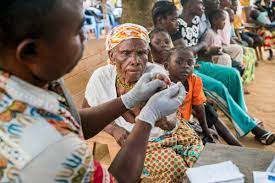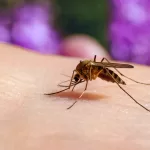For individuals grappling with voice disorders, communicating even the simplest of thoughts can be an arduous task. But a groundbreaking invention developed by a team of UCLA engineers promises to change that narrative, offering a glimmer of hope for those yearning to regain their ability to speak.
In a recent breakthrough detailed in the journal Nature Communications, a group led by Jun Chen, an assistant professor of bioengineering at the UCLA Samueli School of Engineering, unveiled a remarkable device designed to assist individuals with dysfunctional vocal cords in reclaiming their voice function. Measuring just over 1 square inch, this soft, thin, stretchy patch-like device attaches to the skin outside the throat and utilizes cutting-edge technology to detect and translate muscle movements in the larynx into audible speech.
The bioelectric system, developed by Professor Chen and his colleagues, boasts an impressive accuracy rate of nearly 95%, thanks to its integration of machine-learning algorithms. This transformative device represents the latest triumph in Chen’s mission to empower individuals with disabilities, following the success of a wearable glove capable of translating American Sign Language into spoken English.
Comprised of two components, the device harnesses the power of self-powered sensing and actuation mechanisms to convert muscle signals into high-fidelity speech signals. Embedded within its compact design are layers of biocompatible silicone compound and magnetic induction coils, enabling it to detect subtle changes in laryngeal muscle movement. Weighing a mere 7 grams and measuring just 0.06 inches thick, the device adheres seamlessly to the throat, offering a non-invasive and convenient solution for individuals with voice disorders.
Voice disorders affect individuals across all demographics, with research indicating that nearly 30% of people will experience such a disorder in their lifetime. Traditional therapeutic approaches often entail lengthy recovery periods, ranging from three months to a year, and may involve invasive procedures with significant postoperative voice rest requirements.
“This new device presents a wearable, non-invasive option capable of assisting patients in communicating during the period before treatment and throughout the post-treatment recovery phase for voice disorders,” explains Professor Chen.
In initial trials, the device demonstrated impressive accuracy in translating muscle signals into spoken words, showcasing its potential to revolutionize communication for individuals with voice disorders. Moving forward, the research team plans to expand the device’s vocabulary through machine learning and conduct further testing in individuals with speech impairments.
With funding from prestigious organizations including the National Institutes of Health and the American Heart Association, Professor Chen’s groundbreaking invention heralds a new era of possibility for individuals silenced by vocal disorders. As the journey towards voice restoration continues, this innovative device stands as a beacon of hope, offering a voice to those who have long remained unheard.











